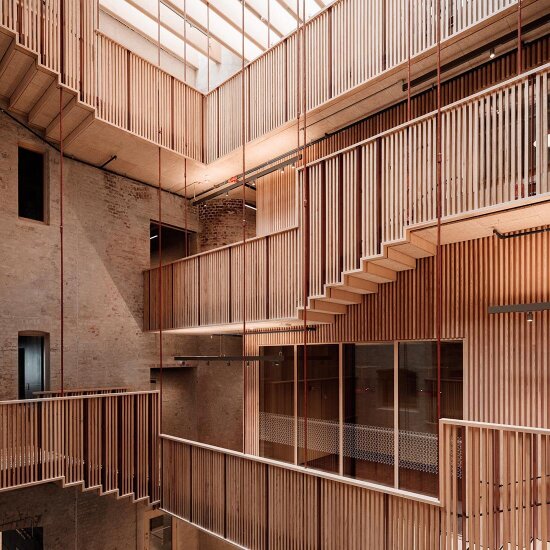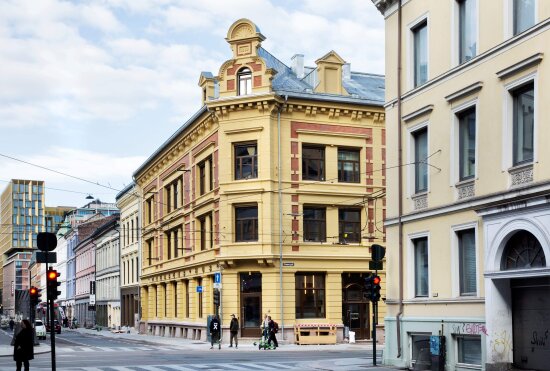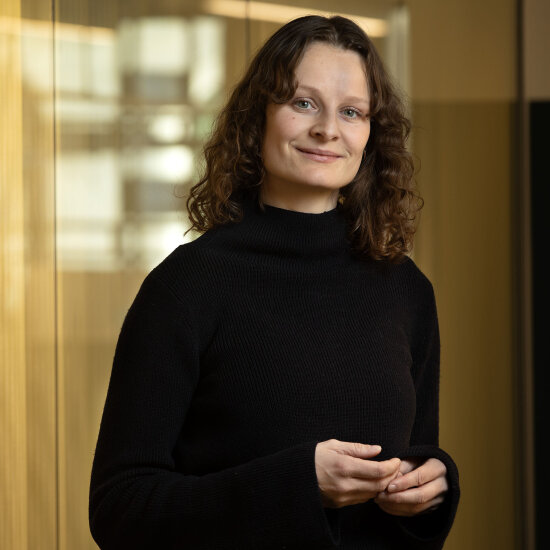When developer Aspelin Ramm first commissioned the architectural offices KIMA arkitekter and Atelier Oslo in 2014, the idea was to convert the two old buildings into flats. But the conservation authorities put their foot down due to the buildings’ architectural qualities which are typical of the period.
When the Norwegian Press House took an interest in the buildings, an opportunity arose to develop a project that would connect the two listed structures, thereby merging them into a single office block. By that time, Aspelin Ramm, Atelier Oslo and KIMA arkitektur had acquired detailed knowledge of the buildings and their associated conservation challenges.
Good workspaces in an old building
The greatest challenge for this project was to find a good way of connecting the two buildings. The exterior façades were retained, while the interiors underwent a total transformation. Whereas originally the buildings were something of a labyrinth and difficult to navigate, it is now easy to find your way thanks to good universal design. The buildings are structured around two new atriums that have been built to provide circulation space and to let daylight into the deep volumes. This has made it possible to design good meeting rooms and workplaces.


One of the atriums opens up above the new entrance. The other is at the centre of the part of the building that houses the canteen and event venues, where an original listed steel structure has been preserved.
A new glass roof supported by timbers provides downlight for the two atriums and the surrounding rooms. Closed and open-plan offices, social zones and meeting rooms surround the atriums, one of which grows wider with every higher floor. The other becomes increasingly narrower as it rises towards the natural downlight.
Much effort has also been put into the choice of materials and colours. The original brick structures are exposed, only covered by a thin coat of lime mortar, and light ash wood has been used throughout. Both new and old steel structures are painted in various shades of red.
Customised and characterful
Since the opening in 2021, there has been a high level of activity at the Norwegian Press House. It has already established itself as an important arena for public debate about issues relating to journalism, media policy and freedom of speech.
Those who work in the Norwegian Press House enjoy the feel of the characterful building which has been customised for their needs. The same applies for the many people who gather here to attend talks and debates.

An important additional feature is that the premises at Skippergata 22–26 have introduced a multitude of positive activities to a challenged part of central Oslo. It gave cause for great pride when the Norwegian Directorate for Cultural Heritage pointed to the Norwegian Press House as a pioneering project in terms of adaptive reuse.
The Norwegian Press House has won several awards, including the City of Oslo Architecture Award and the Oslo Architects’ Award for Architecture 2022.
Norwegian Press House: Two listed inner-city buildings have been transformed into modern offices
By: Atelier Oslo, KIMA Arkitektur, IARK and Aspelin Ramm
Design disciplines: Architecture, Interior architecture, Heritage and conservation
Recipient of the DOGA Award
This project has received the DOGA Award for Design and Architecture for its outstanding qualities and for showing how strategic use of design and architecture create important social, environmental and economic value.
These are two reasons why this is an exemplary project:
- Bringing new vibrancy to a challenged part of the city
The Norwegian Press House has become a vibrant meeting place in a part of Oslo that has its challenges. The people who use the building are delighted to spend their time in a characterful building that has been customised for their needs.
- Adaptive reuse reduces carbon emissions
The Norwegian Press House is a pioneering project in terms of adaptive reuse of buildings, which is an important approach as the construction industry seeks to reduce its carbon emissions.


